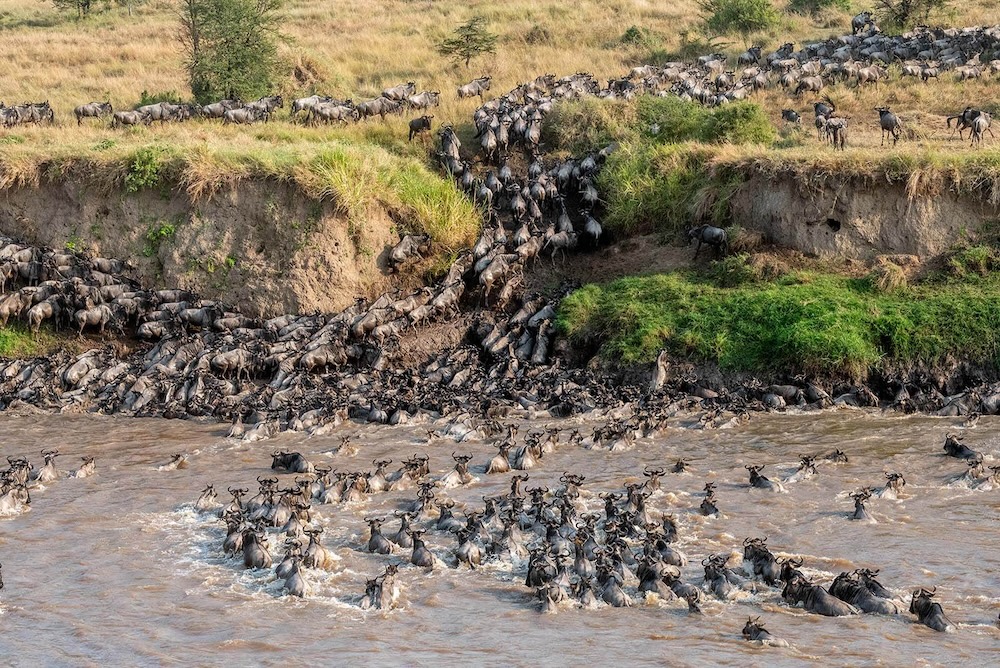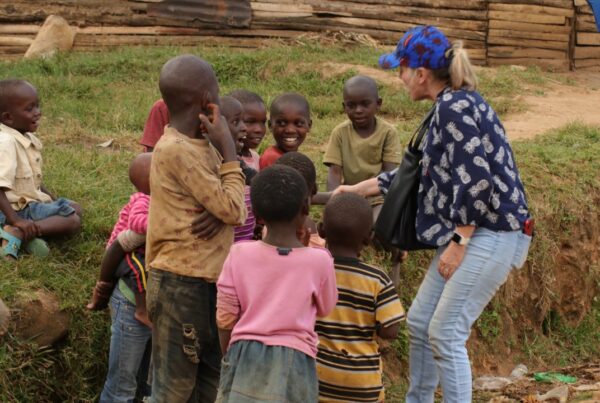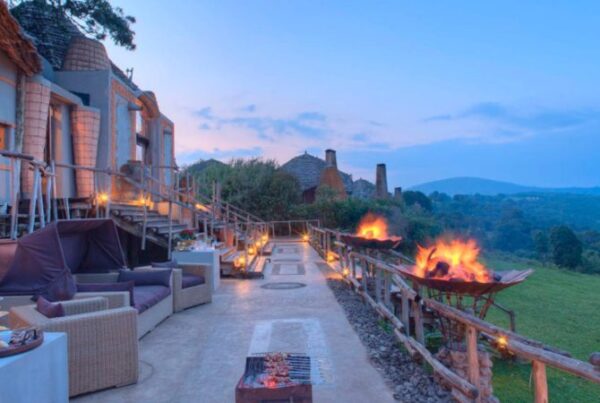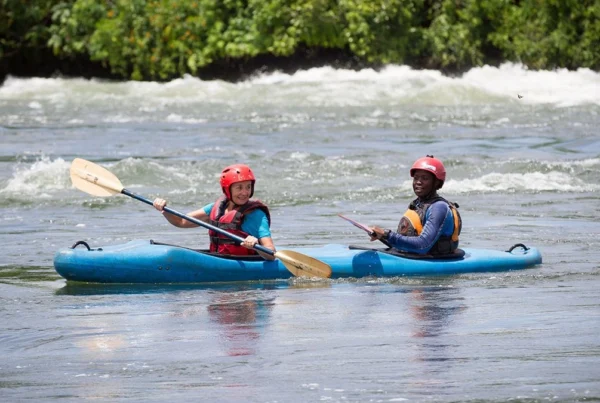Introduction to A Wildebeest River Crossing in the Serengeti
There are few sights on Earth that can match the drama, scale, and raw energy of a wildebeest river crossing in the Serengeti-Mara ecosystem. Every year, over 1.5 million wildebeests—joined by hundreds of thousands of zebras and gazelles—embark on a relentless journey in pursuit of greener pastures. This is the Great Migration, one of nature’s greatest spectacles and a defining experience of African wildlife.
But within this epic journey lies its most heart-stopping moment: the crossing of crocodile-infested rivers like the Mara and Grumeti. Here, instinct collides with danger, and chaos becomes choreography. This article takes a deeper look into this thrilling chapter of the migration and why it remains a must-see on any African safari.
Understanding the Great Migration
The Annual Cycle of Life and Death
The Great Migration is a continuous, clockwise cycle of movement through the Serengeti in Tanzania and the Maasai Mara in Kenya. It’s not a one-time event, but a year-round progression dictated by rainfall patterns and grazing availability.
Wildebeests move from the southern Serengeti calving grounds in January–March toward the north, eventually reaching the Mara River region around July to September. It is here that one of nature’s greatest dramas unfolds: the wildebeest river crossing.
The River Crossing: Nature’s Ultimate Gamble
A Game of Instinct vs. Peril
When wildebeests reach the banks of the Mara River, they hesitate. The water is not just a barrier; it is a predator’s playground. Nile crocodiles, some measuring over 16 feet in length, lie in wait. The steep embankments, strong currents, and stampeding herds add to the peril.
Yet the wildebeests cross, compelled by the promise of lush grazing grounds on the other side. Driven by instinct and the overwhelming urge to follow the herd, thousands plunge into the water, creating a frenzied scene of noise, splashing, panic, and courage.
The Role of Crocodiles
Crocodiles play a vital ecological role in these crossings. As apex predators, they target the weak, the injured, and the inexperienced. Although tragic, these kills are part of the ecosystem’s balance—sustaining predators and preventing overgrazing.
Danger From Within
Not all casualties are due to predators. Many wildebeests die from drowning, exhaustion, or trampling during stampedes. The panic of thousands trying to cross simultaneously leads to bottlenecks, with some animals being crushed or swept away by currents.
Timing and Location: When and Where to Witness It
While nature follows its own unpredictable schedule, July through October typically offers the best chance to witness a crossing. Key river crossing points include:
- Mara River (Northern Serengeti/Maasai Mara): The most iconic crossing with high crocodile activity.
- Grumeti River (Western Corridor): Crossings begin earlier in the season, around May to June.
However, crossings can happen sporadically and unpredictably. It’s not uncommon for herds to gather at the riverbank for hours—or even days—before deciding to cross. This unpredictability adds to the suspense and awe of witnessing the event firsthand.
Beyond the Wildebeest: A Wildebeest River Crossing in the Serengeti
Zebras and Gazelles
Wildebeests don’t migrate alone. They are often accompanied by zebras and Thomson’s gazelles. Zebras help lead the way by remembering routes and water points from previous years, while gazelles often follow for safety in numbers.
Predators on the Trail
Lions, hyenas, cheetahs, and leopards shadow the migration, knowing that the mass movement offers prime hunting opportunities. The drama of the river crossing continues on land, where exhausted or separated individuals fall prey.
Conservation and the Future of the Migration
Despite its grandeur, the Great Migration faces numerous threats:
- Human encroachment: Expanding agriculture and fencing disrupt migration corridors.
- Climate change: Altered rainfall patterns impact grazing and water availability.
- Infrastructure projects: Roads and dams may hinder animal movement if not planned responsibly.
Conservationists, governments, and safari operators must collaborate to protect this global natural heritage. Sustainable tourism, research, and policy advocacy are crucial to maintaining the integrity of this phenomenon for generations to come.
Why Seeing It Live Is Unforgettable
No documentary or photograph can prepare you for the sensory overload of a wildebeest crossing. The earth trembles under their hooves. The air is thick with dust and tension. The sounds—bellows, splashes, growls—resonate deep in your chest.
It’s a moment of raw, unscripted nature, where you bear witness to the ancient pulse of the wild. Each crossing is different, shaped by the conditions, the players, and chance. That’s why many seasoned travelers say this is the greatest wildlife experience on Earth.
Embark on Your African Safari With WildHorn Africa
If you dream of witnessing the thunderous wildebeest river crossings or exploring the endless plains of the Serengeti, look no further than WildHorn Africa.
As specialists in authentic, expertly guided safaris, WildHorn Africa crafts tailor-made experiences that connect you to the soul of Africa. From luxury lodges to mobile tented camps, from sunrise game drives to intimate riverbank stakeouts, your adventure will be crafted with care, respect for nature, and deep local knowledge.
Book your unforgettable safari today with WildHorn Africa — and become part of the legend of the Serengeti.
A Wildebeest River Crossing in the Serengeti #A Wildebeest River Crossing in the Serengeti





 WildHorn Africa – Authentic and unforgettable tours across Africa, guided by local experts who know the land, wildlife, and culture best.
WildHorn Africa – Authentic and unforgettable tours across Africa, guided by local experts who know the land, wildlife, and culture best.


